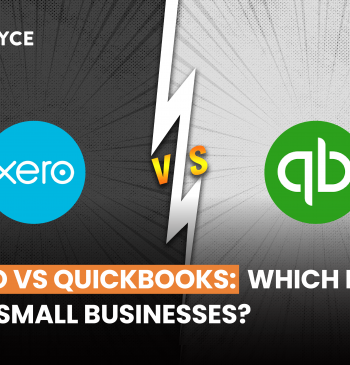16 Feb

Accounting plays an important role in any organization and business. Whether it is small and medium enterprises. It helps track all income and expenditures. It ensures that quantitative financial information can be used in decision-making. Accounting is based on some steps and processes. These steps and processes are called the accounting cycle. Bookkeepers analyze business transactions and record them in the general journal. Here in this article you will learn and understand each step of the accounting cycle.
What is the accounting cycle?
The accounting cycle is the holistic process of processing and recording all the financial transactions of a business after a successful transaction occurs. It consists of a series of steps performed during the accounting period.
Generally, the accounting period consists of 12 months. An accounting period varies from business to business or entity to entity. The accounting period of any company starts from January to December but its not a thumb rule to use January to December accounting period, it may vary from company to company according to their needs and policies.
Accounting Cycle Steps
There are eight steps of accounting cycle; each step is important and cannot be missed. One of the main duties of an accountant or bookkeeper is to keep track of and ensure accuracy of the accounting cycle. The cycle repeats itself every fiscal year as long as a company or business remains. The eight steps of accounting cycle are as under:
An accounting cycle starts when a business transaction takes place.The accounting cycle will not start Until and unless you have transactions . A transaction may include a debt payoff, any purchases, sales revenue, acquisition of assets, or any expenses incurred.
Journalizing is the process of recording transactions. Transactions or economic events are recorded in the journal of the company in chronological order. The journal shows both the debit and the credit sides involved in transactions.Journalizing is done on the basis of double entry system which should impact both debit and credit sides of the accounts involved in transaction.
After recording journal entries for transactions, the next step is to post entries to the individual ledger accounts. Posting is summarizing of the information contained in the journal, where one can summarize all the transactions related to that account.
Trial balance lists the balances of all ledger accounts, and calculates the total balance of all individual accounts after specific intervals , which may be quarterly, monthly, or yearly, depending on the business or company requirements.The purpose of preparing trial balane is to assure the accuracy of ledger account balances.
Adjustments are journal entries made at the end of the accounting period. Adjusting entries are made that allocate income and expenses to their proper period. The pupose of adjusting entries is to comply with revenue recognition and matching principle.
Adjusted trial balance is the listing all ending balances of general ledger accounts afer adjusted entries have been made.The purpose is to correct errors in an unadjusted trial balance and provide an accurate base for the preparation of financial statements.
An accountant or bookkeeper prepares the financial statements by looking at an adjusted trial balance.The main financial statements include income statement, cash flow statements, and balance sheet.These statements are prepared to know the financial health of a company. use the correct balances.
In the end, bookkeepers or accountants close the revenue and expense accounts and zero them out for the next accounting cycle. This enables them to compare two periods and see if a business or company has improved or declined in its financial health.
A post-closing trial balance is a trial balance prepared after closing entries. It serves as a check on the accuracy of the closing process and ensures that books are in balance at the start of the new accounting period. However, it excludes all temporary accounts since they have been closed. It only includes permanent accounts or balancesheet items.
What is the purpose of the Accounting Cycle?
The accounting cycle act as a stepping point or base for developing the financial statements of any business. The main purpose of the accounting cycle is to keep a record of all the transactions systematically without missing any single transaction or entry.
All financial records and financial statements accuracy depends on the accounting cycle. Accountants or bookkeepers rely on the accounting cycle and consider it while keeping records of accounts.
Key Terms
- Account: it is a registry of a particular transaction. It is a record of financial transactions used to track financial activities, i.e. business dealings or debts or credits.
- Debit and Credit: These are the rules of accounting in order to balance books of accounts.
- Debit: Increase in assets and expenses accounts and decrease in liability, revenue or Equity accounts.
- Credit: Increase in liability, income, and equity accounts and decrease in asset and expense accounts.
Final Thoughts
To fully understand accounting, it is important to have a solid understanding and knowledge of each and every step of an accounting cycle. Thus, it is a holistic approach beginning with when a translation takes place.
Content Writer at Invyce.com
Related Post
Copyright © 2024 – Powered by uConnect



Jamila